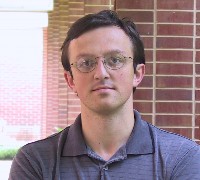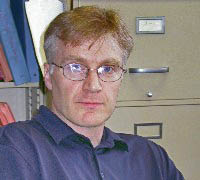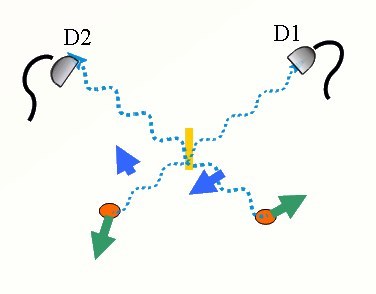Quantum communication holds the promise of highly secure information transfer making eavesdroppers almost a thing of the past. The problem facing those hoping to develop such a system is in exploiting the property of quantum entanglement in the real world. Now, physicists at the Georgia Institute of Technology have entangled a photon and a single atom located in an atomic cloud and demonstrated that it passes the crucial validity test known as the Bell inequality violation.
Relying on photons or atoms to carry information from one place to another, network security relies on a method known as quantum cryptographic key distribution. In this method, the two information-carrying particles, photonic qubits or atomic qubits, are entangled. Entanglement invokes the odd quantum effect that should one of a pair of entangled particles be observed then the other will be affected and the entanglement destroyed and the eavesdropper revealed.

Alex Kuzmich
Quantum bits, qubits, the currency of quantum communication, can travel long distances if they’re made from photons and so carry information over long distances but longevity is a problem. Atomic qubits, on the other hand, are much more stable and so can store information for much longer but long-distance travel is a problem for them. An entangled system using both photons and atoms offers the best of both worlds. The trick is how to get them entangled in a simple way without resorting to masses of hardware.
Physicists Alex Kuzmich and Brian Kennedy reasoned that a collective approach would work because this avoids the issue of having to isolate an atom to get it into an excited state ready for entanglement with a photon. A cloud of atoms would be the key.

Brian Kennedy
Using a collective atomic qubit is much simpler than the single atom approach, explains Kuzmich. It requires less hardware because we don’t have to isolate an atom. In fact, we don’t even know, or need to know, which atom in the group is the qubit. We can show that the system is entangled because it violates Bell inequality. Collective excitation needs minimal initial preparation in other words.

Quantum cryptography
In addition to having the system pass the rigorous test of Bell inequality, the researchers were able to increase the length of time the atomic cloud can store information to several microseconds. This is long enough by fifty times to prepare and measure the atom-photon entanglement. The next step will be to put systems like this together and confirm that they behave quantum mechanically.
Further reading
Phys Rev Lett, 2005, 95, 040405
http://link.aps.org/doi/10.1103/PhysRevLett.95.040405
Alex Kuzmich
http://www.physics.gatech.edu/people/faculty/akuzmich.html
Brian Kennedy
http://www.physics.gatech.edu/people/faculty/bkennedy.html